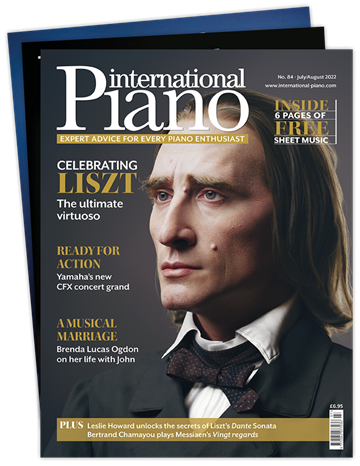Why do so few female composers appear on recital programmes?
Charivari
Thursday, June 1, 2023
Should gender come before talent when programming composers? Charivari steps onto a slippery slope

A few weeks ago, I happened to catch a thought-provoking discussion on BBC Radio 3’s Music Matters. Presenter Tom Service was interviewing the Brazilian operatic soprano Gabriella Di Laccio. She is the founder of an organisation called DONNE, which aims to bring to our attention ‘the fascinating stories of neglected women composers.
‘Sadly,’ her website continues, ‘many of them were unrecognised in their lifetimes and, for a series of reasons, their music was allowed to disappear from the public ear, unacknowledged and ignored.’
In his introduction, Service told us that an analysis done by DONNE last year revealed that worldwide, Florence Price was the most performed female composer, played 61 times by 111 orchestras in 31 countries. ‘That’s 61 out of a total of 20,400 pieces on those global orchestral programmes,’ said Service, ‘making her the most performed woman but only the 50th most performed composer. In fact, just 7.7 per cent of the pieces performed were by women.’ Even that figure, the conversation later revealed, might be artificially high.
Just as third-rate artists who can’t deliver the goods will not prosper in the profession, so third-rate music by composers of any background or identity will not survive
The focus was on orchestral repertoire but the issues raised were equally applicable to the piano world. Why do so few female composers appear on recital programmes? Why are concert promoters so fearful of including at least one item by a female composer? Are ticket sales the deciding factor in what gets played in a concert? If that is the case, should that be so? If not, why are promoters so risk averse, or, perhaps, simply ignorant of what is out there? These are all valid questions. What I take issue with is the box-ticking exercise such endeavours can easily become. Ms Di Laccio was tired of talk and wanted action. While praising certain orchestras for increasing their female composer representation to 40 per cent per season, most lagged far behind, and she castigated those who increased from 5 to 7 per cent in one year. ‘Why not 20 per cent, 30 per cent or 40 per cent in a year?’ she demanded.
If we start programming composers because of their gender and not their quality, then we are on a very slippery slope. There are many dozens of composers as it is – especially from the 19th century – who are ‘unacknowledged and ignored’. This has nothing to do with gender and everything to do with lack of curiosity by artists and lack of initiative by promoters.
Indeed, it puzzles me why no great female pianist of the past played any music by composers of their own sex – and why so few do so even today, when scores of everything can readily be found online. Historically and socially, we know, women were prevented from pursuing musical careers. Look no further than Mendelssohn, Schumann and Mahler and their attitudes towards their siblings and partners. But not in 2022 – and not for many decades before 2022. There is no longer any excuse.
So where are the women pianists who are championing Mel Bonis, Lili Boulanger, Cécile Chaminade, Agathe Backer Grøndahl, Amy Beach, Teresa Carreño and Maria Szymanowska, to name a few of the better-known? It has been predominantly male pianists who have taken them up.
Exceptions include Alexandra Dariescu, who pairs piano concertos by male composers with their female counterparts in the same concert. An excellent 10-CD box set Three Centuries of Female Composers on the Grand Piano label has Sara Aimée Smiseth playing Backer Grøndahl, Alexandra Oehler playing Carreño, Tanya Ekanayaka playing her suite The Planets & Humanity, and Hiroko Ishimoto showcasing 15 female composers. Clare Hammond (on BIS) has released a fascinating disc of 29 Études by Hélène de Montgeroult (1764-1836) whose complete sonatas, incidentally, fill two discs in the Grand Piano set.
Things are changing. There are now far fewer barriers to any woman doing or playing exactly what she wants in the music world. But it needs big names to make big changes. For whatever reason, you will find none of Martha Argerich’s generation interested in championing a female composer just because they happen to be female. If you haven’t realised it, classical music and its performance is a meritocracy. Just as third-rate artists who can’t deliver the goods will not prosper in the profession, so third-rate music by composers of any background or identity will not survive.
Unjustly as history has treated women as creative artists, the fact remains that there is a long list of composers whose music is awaiting discovery and, as unpalatable as it may be to some, almost all of them are dead, white and male. Today, for them that means an even longer wait for rediscovery.
The DONNE website lists 5,175 female composers and a wealth of other information regarding women in music worldwide: donne-uk.org/the-big-list
This article originally appeared in the December 2022 issue of International Piano. Never miss an issue – subscribe today












